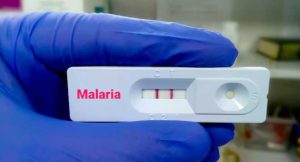The India malaria diagnostics market is projected to reach approximately USD 92.7 billion by 2034, rising from USD 59.2 billion in 2024. This reflects a compound annual growth rate (CAGR) of 4.5% during the forecast period. The expansion is driven by ongoing government initiatives, technology innovation in diagnostics, and rising public awareness. The Indian government’s efforts toward malaria elimination continue to boost demand for efficient diagnostic services. This includes early detection programs and wider availability of diagnostic infrastructure across public healthcare settings. These initiatives aim to reduce malaria-related morbidity and improve overall public health outcomes.
A key driver for this market is the continuous advancement in diagnostic technology. The availability of rapid diagnostic tests (RDTs) has significantly improved the accuracy and speed of malaria detection. These tools are especially useful in remote and underserved areas, where laboratory access is limited. Portable RDTs have made timely diagnosis possible without the need for complex lab facilities. Moreover, the integration of digital diagnostic tools and mobile health solutions is supporting better monitoring and reporting. These innovations not only improve healthcare access but also enable faster treatment decisions, contributing to better disease control.
Public awareness and education efforts are also playing a significant role in boosting the malaria diagnostics market. Various campaigns by health departments and non-governmental organizations have emphasized the importance of early diagnosis and prevention. As a result, more individuals are seeking testing when symptoms arise. Increased awareness has also led to better utilization of diagnostic resources at both urban and rural levels. This shift in healthcare-seeking behavior is helping to curb malaria transmission through earlier intervention and treatment.
International support further strengthens the malaria diagnostics infrastructure in India. Collaborations with the World Health Organization (WHO), Global Fund, and other global health agencies have enabled access to technical expertise and funding. These partnerships assist in deploying best practices and ensuring the supply of advanced diagnostic kits. Additionally, capacity-building initiatives and training for health workers have improved diagnostic accuracy and reporting. Such support is essential in sustaining India’s long-term malaria control strategy.
The growth of the malaria diagnostics market in India is underpinned by strong government action, rapid technological progress, rising health awareness, and international cooperation. These combined efforts support India’s goal to eliminate malaria and improve disease surveillance. The diagnostics sector will continue to play a central role in this nationwide public health mission.
In conclusion, the India malaria diagnostics sector is growing steadily due to strong support from government programs, global partnerships, and new technologies. The use of rapid and digital diagnostic tools is helping reach more people, especially in rural and hard-to-access areas. Hospitals and mobile health units are playing a vital role in early detection and treatment. Awareness campaigns and education have encouraged more people to seek timely diagnosis, helping reduce the spread of the disease. Research institutions are also working to improve the accuracy and speed of testing methods. These combined efforts are making diagnostics a central part of India’s strategy to eliminate malaria and improve public health outcomes. Market.us

Leave a Reply